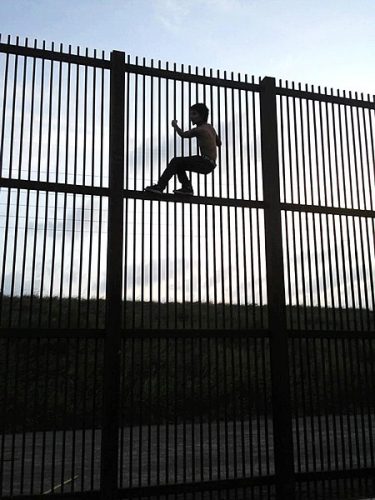

By Angel Cervantes
LOS ANGELES – Various news outlets have recently reported that Title 42, a public health order by former President Donald Trump, has ended. On the basis of limiting the spread of COVID-19, the order allowed US officials to more easily turn back immigrants attempting to cross the US-Mexico border.
Republican attorney generals were one of the groups to voice reluctance to part from using Title 42’s border policy, citing concerns regarding a massive influx of people entering the US through the border. These attorney generals, though, still acknowledge that Title 42 merely gives border states a sense of temporary relief as it is the only option to deal with the thousands of migrants entering the U.S.’s southern border.
Title 42 has a reputation for being a controversial public health order, given that it was ordered by the Trump Administration, which saw its functions take immediate effect. One of these highly controversial policies was family separation, which separated children from their parents when U.S. border patrol agents detained them. The Trump Administration considered this lawful on the basis that these migrant’s parents had openly breached the law in America.
As previously explained, this policy was not created to help resolve our border dilemmas but to provide temporary relief. As we can see, Title 42 is no longer in effect, but undocumented immigrants continue flowing through the southern border.
Despite the relief of many pro-migrant activists — who have been calling for the removal of Title 42 since its implementation — we must ask ourselves the proper way to resolve this issue. In other words, do we as a nation have the desire to address an issue that should have been addressed long before? If so, identifying the fundamental roots of the immigration problem would go a long way in terms of putting an end to this migration dilemma.
While not easily accomplished, with proper commitment, we can achieve a system that more easily integrates undocumented immigrants into American society. If done successfully, it would go a long way toward setting the foundation for a successful national immigration approach.
David J. Bier, an associate director of immigration studies at the Cato Institute, has suggested that, in order to address what he describes to be an inflexible immigration system, there needs to be a systematic transformation so that we can adapt the necessary conditions to see a less restrictive and more flexible immigration system. Thus, a system with fewer restrictions or extreme loopholes and more clarity on what it takes to get it legalized in America.
Having done so will enable the cooperation between law enforcement and migrants who are seeking refuge in America. Hence, if the proper conditions exist, immigrants would feel more incentivized to cooperate with law enforcement. This utopia-esque pro-migrant universe builds an ideal scenario for the American economy when considering how much our country has benefited from migrants in America.
For too long, there has been particularly harmful rhetoric dictating the nationwide immigration debate. Daniel López-Cevallos explains that this rhetoric has molded how Americans feel towards the border dilemma between Mexico and the U.S. If we are to see a successful immigration system come to fruition, it is crucial to have public support. To have public support, nationalized rhetoric must be reformed and retransformed into a message the general public can get behind.
When it comes to how this immigration system generates the necessary support for migrants to acquaint themselves with American society, we must opt towards expanding lawful pathways that would not only give needed protection to migrants but also help facilitate the processing of migrants in the most humane way possible.
This would allow migrants to feel welcomed and supported in a country that wants to see them succeed. In the past, Title 8 served a similar purpose. According to the U.S. Department of State, the return of this title could help reduce the number of repeated border crossings that were common during the reign of Title 42.
The downfall of Title 42 seems to have influenced President Biden and his administration to crack down on the immigration crisis by denying asylum to migrants at the southern border. It mirrors much of the effects found under the jurisdiction of Title 8.
Nonetheless, while these actions intend to take a more humane approach towards incentivizing those who seek asylum in America to pursue it legally, they still leave us wondering how committed the Biden Administration is to resolving these issues. In conclusion, having a proper course of action implemented would go a long way toward altering how immigration is currently handled in the United States.